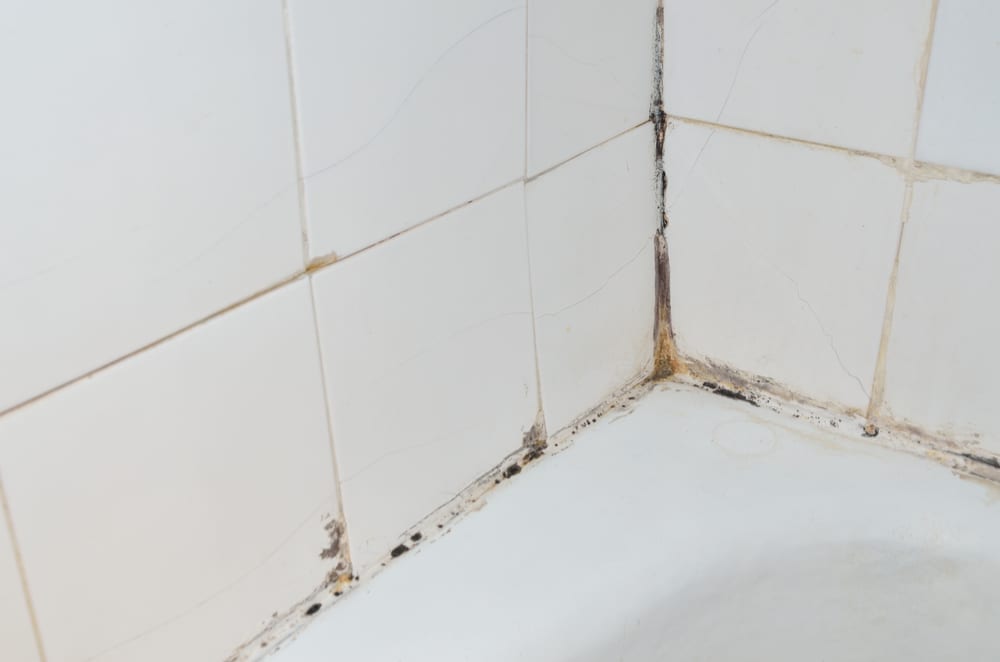Bathrooms are one of the most common places for mold in the home. They are often hot and humid, which is an ideal environment for mold growth. Poor ventilation further compounds the issue. While it’s often found on bathroom walls and on bathtub tile and grout, mold in the bathroom can grow on almost any surface. Some of the unsuspecting areas are underneath the tile, wood, and floor where mold can hide. For this reason, it’s important to understand why it grows and take steps to prevent mold in the bathroom. Here are some steps to take to stop mold growth and decrease the chances you’ll need to hire a mold remediation company.
Ways to Prevent Mold in the Bathroom
Moisture is always the cause of mold, so it’s important to prevent water and moisture from building up in your bathroom. These tips will help prevent mold in the bathroom.
Use an Exhaust Fan
An exhaust fan is often the best way to prevent mold in the bathroom. When hot water runs in your bathroom it gives off steam. This steam can fit into many small areas of the room such as underneath paint, cracks in tiles, underneath wallpaper, and in the walls. Venting the humid, steamy air prevents condensation from forming on your walls and ceilings. Keep the vent fan on while running hot water to prevent the build-up of water in your bathroom that is the source of mold growth. If you don’t have an exhaust fan, you can either have one installed or open a window. If you choose to open a window, consider using a small fan to help vent air outside,
Check Your Plumbing
While plumbing leaks are uncommon, they are likely to go unnoticed for an extended period of time. Inspect the plumbing around your shower and sink in addition to the seals of the sink. There is a significantly higher concentration of pipes in the bathroom than anywhere else in the house. Pipes will deteriorate over time and allow a slow water leak. Even if the amount is barely noticeable, it will still be enough to support mold in the bathroom.
Clean Your Shower Curtain
We often take shower curtains for granted, but they are another common place for mold in the bathroom because they are constantly damp. Clean your shower curtain with a bleach and water solution every week and replace it as necessary.
Inspect Your Bathtub and Shower
The shower and bathtub are other common places for mold because they are often used daily. Over time, water can weaken the caulking around the bathtub and the grout between tiles. This is an opportune place for mold to grow. It can even spread behind the tile and through your walls if there is enough moisture.
Clean regularly with a bleach solution and repair caulk and grout as necessary. For added protection, wipe down the walls of your shower after every shower. Don’t forget to clean the items in your shower too. This includes your body wash and shampoo bottles, and razors. While you may be addicted to your luffa, it’s hard to clean. A regular washcloth is a better option.
Use a Towel or Shower Rug
Use a towel or shower rug is another way to prevent mold in the bathroom. Stepping in and out of the shower allows water to drip off your body to the floor of the room. Mold only needs a small amount of water to thrive. Your daily shower is enough for mold to grow on your flooring or in the crevice between your floor and bathtub.
Clean Your Toilet
While mold in your toilet is less common, it is still possible. Clean your toilet with a bleach and water solution every week. Make sure you get the hard to reach areas too, like behind the toilet tank and the underside of the toilet bowl rim.
What to do if You Have Mold in Your Bathroom
If you already have mold in your bathroom, there are few simple steps you can take to remove it. If the mold is affecting less than a few square feet, you can clean and remove mold yourself. You should hire a professional mold removal company if the area is larger or if the mold is growing in flooring, walls, or ceilings.
- Fix the water source. Mold needs water to grow and it will return if the water remains, even after a thorough cleaning.
- Protect yourself by cleaning the mold. Wear pants, long sleeves, gloves, goggles, and a face mask. This protects your eyes, nose, mouth, and skin and limits the chance of mold exposure.
- Dispose of items that cannot be easily cleaned and disinfected. The same goes for items that take a long time to dry after cleaning.
- Never mix cleaners or chemicals. They can produce potentially fatal gases.
- Work in a well-ventilated space when using chemicals to clean or disinfect mold. This prevents you from breathing in their fumes and getting light head or passing out.
- Use a mild detergent to scrub surfaces, then dry them thoroughly with clean towels. For larger areas, use fans, air movers, or dehumidifiers to speed drying.
- Spray the area with a hospital-grade disinfectant using a spray bottle or other spray dispenser. This ensures the best level of disinfection. A solution of bleach and water will kill the mold, but it is likely to stain carpeting, fabrics, and other surfaces.
- Never cover mold with paint or caulk. Without proper cleaning, the mold will return in days or weeks.
Bathroom Mold Removal Near You
Get fast, reliable bathroom mold removal today. Call 1-888-443-3110 now for a free estimate from a mold removal specialist near you.





